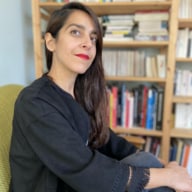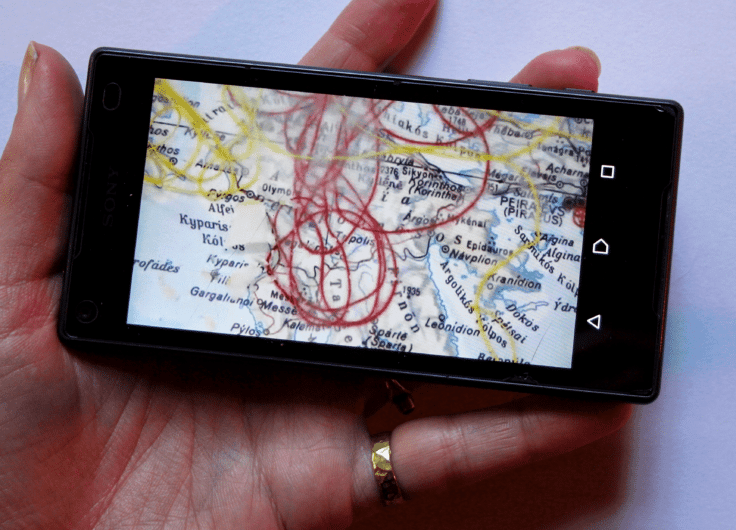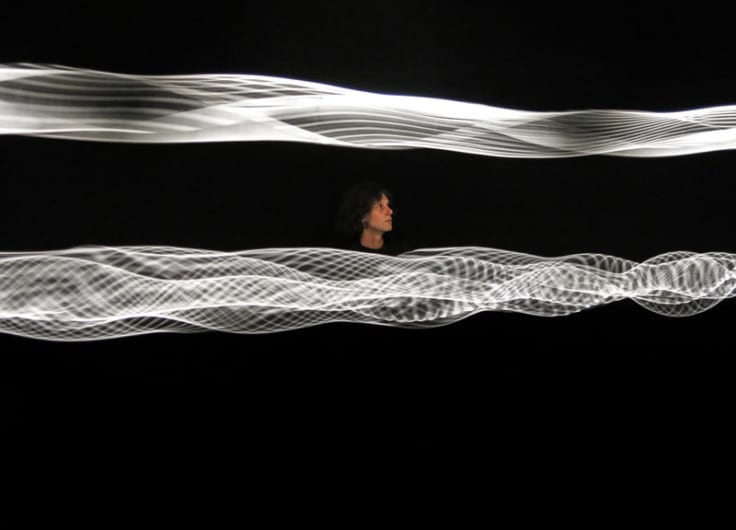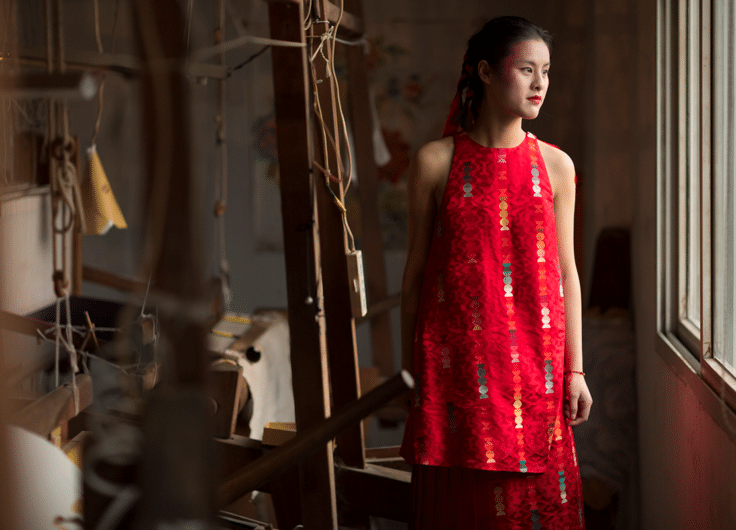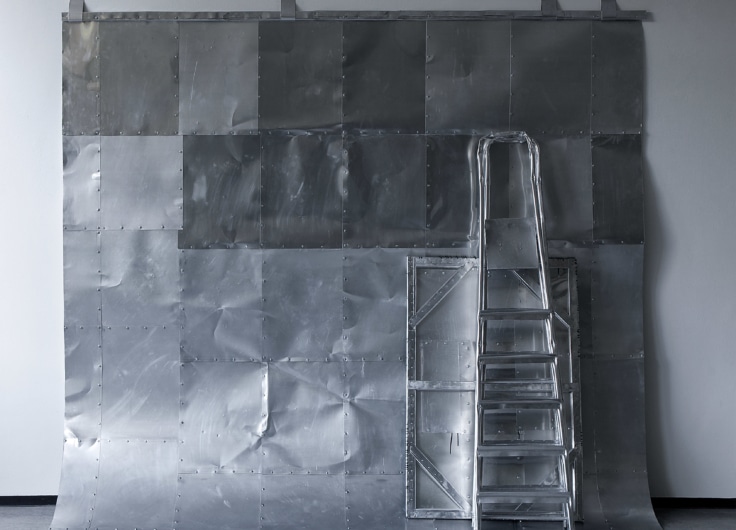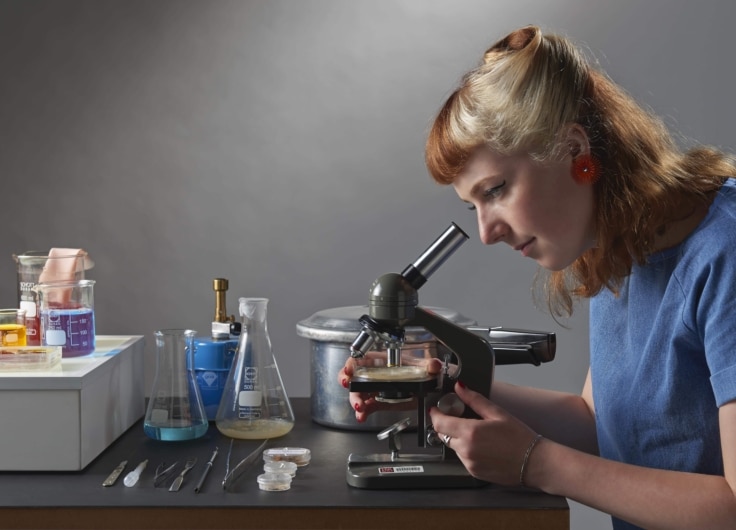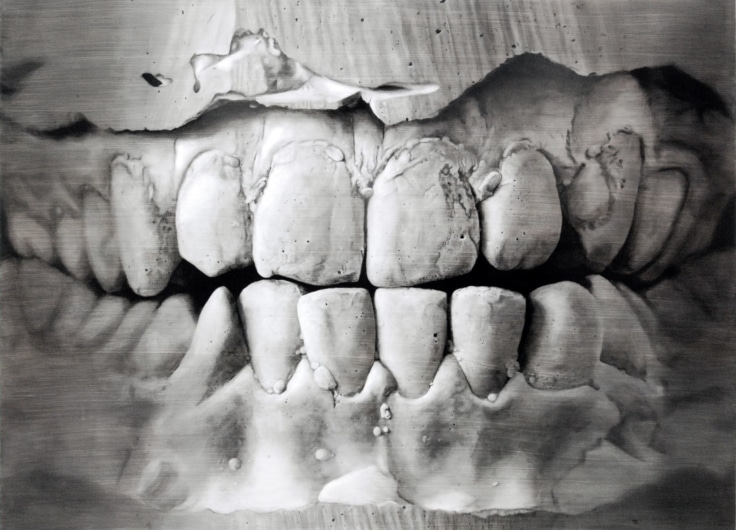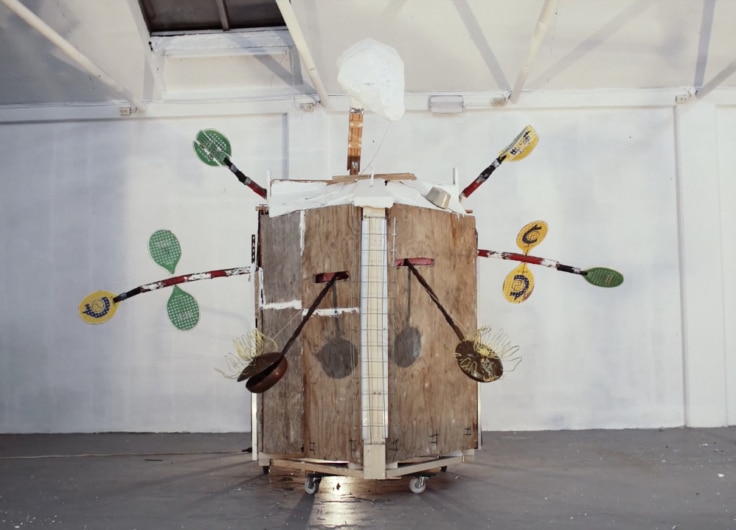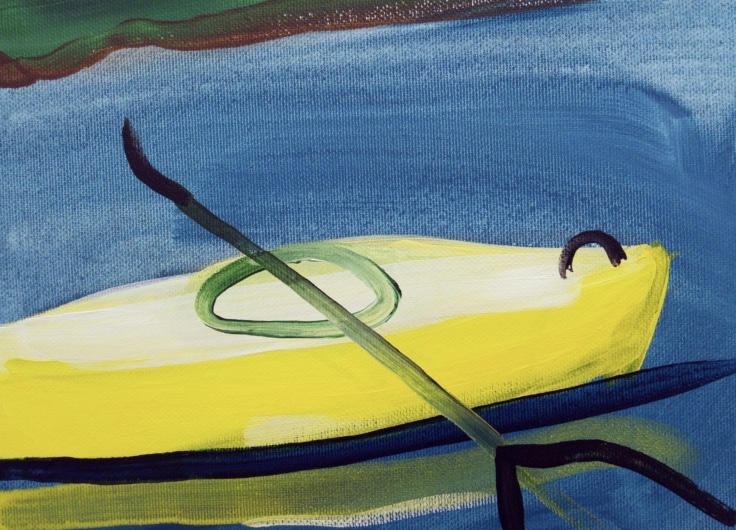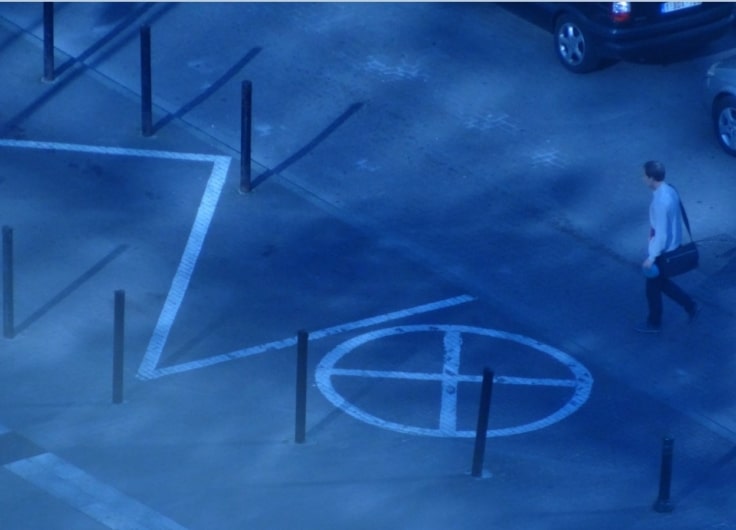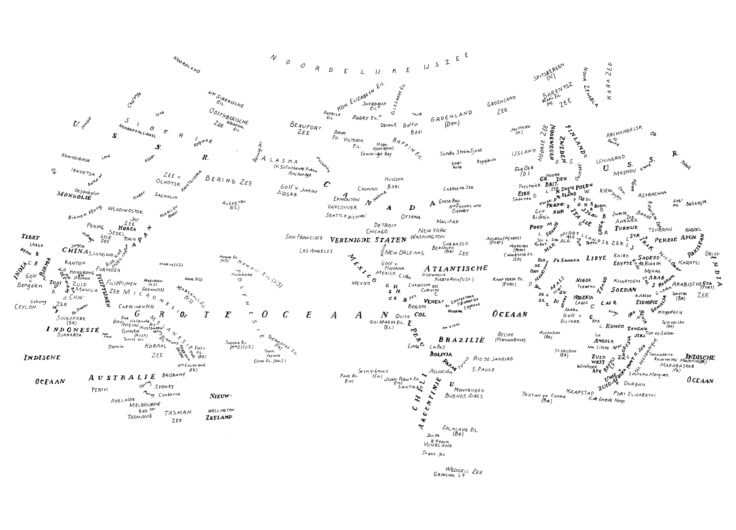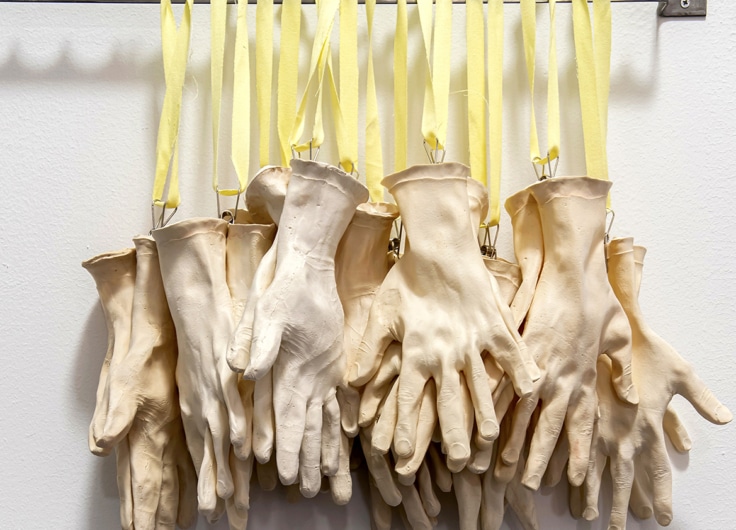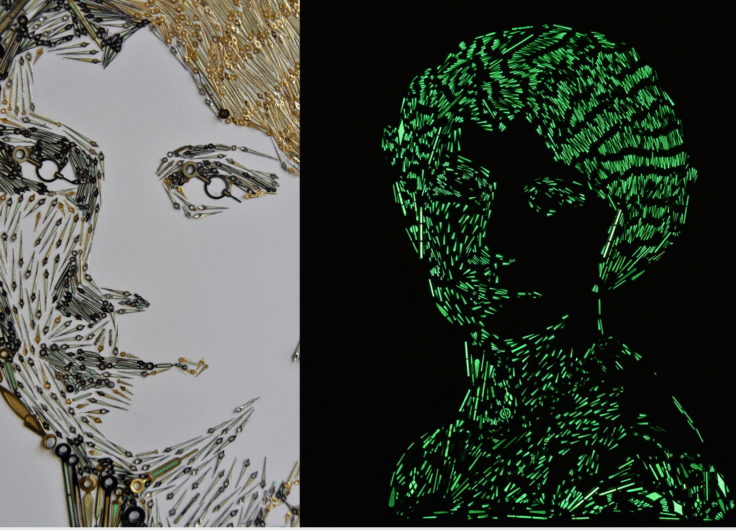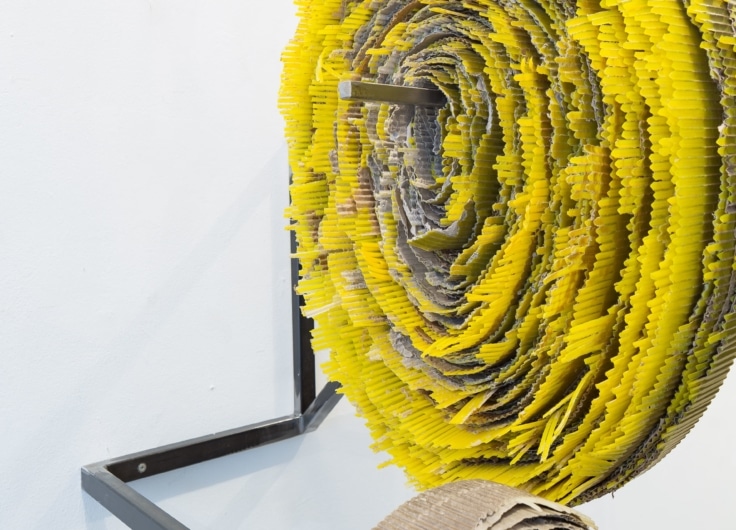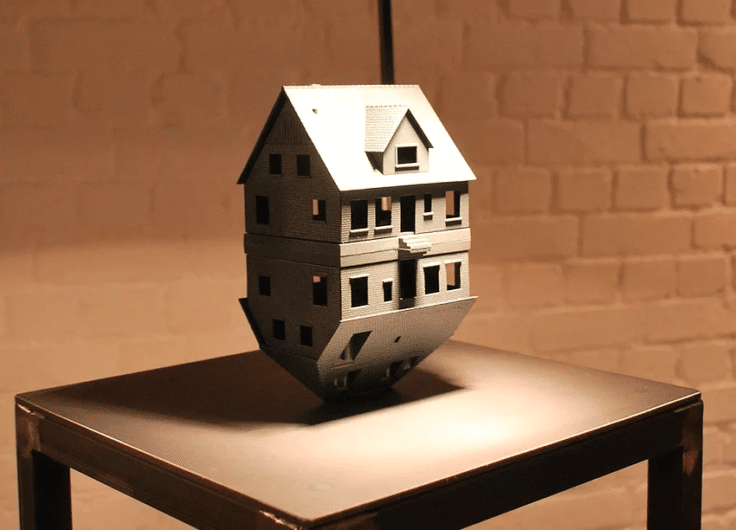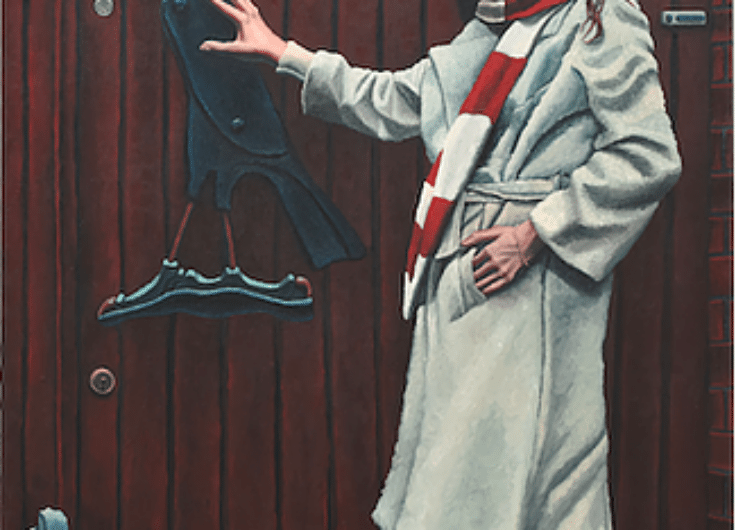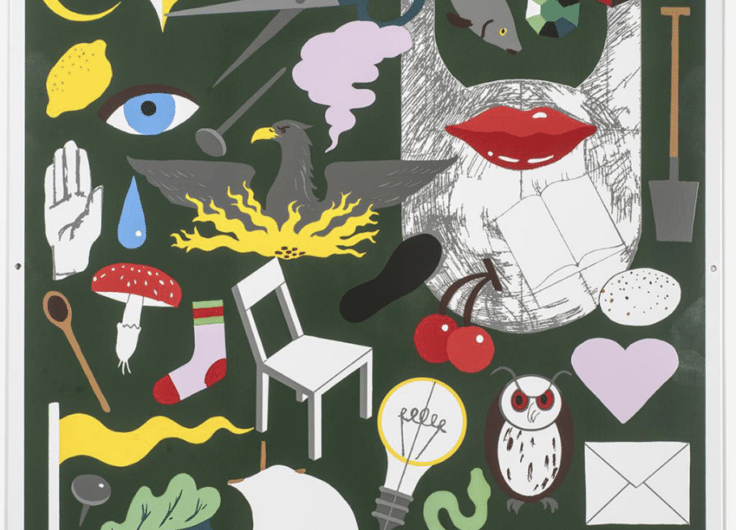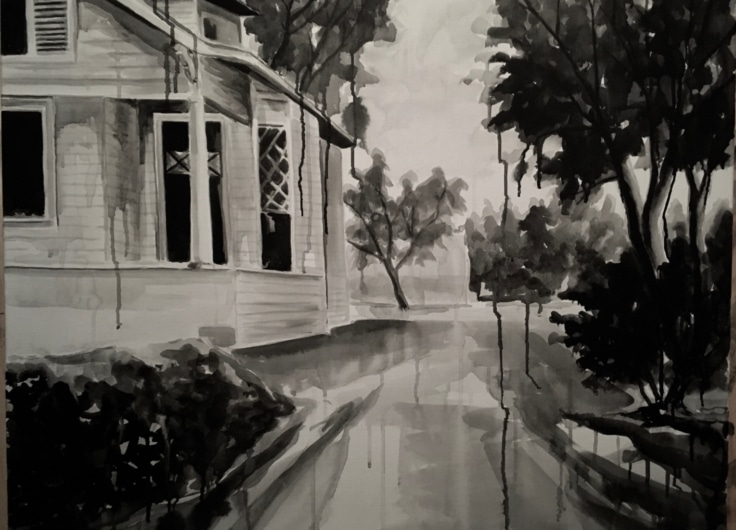Les Monseigneurs Bring Tapestry Into the Present
The low countries paid a visit to Thomas Renwart, also known under the nom d’artiste Les Monseigneurs, in his studio in Ghent. Specialising in textiles, he creates eclectic tapestries in a contemporary style that resemble botanical gardens.
The private studio of Thomas Renwart finds itself in a green and peaceful cloister. Impish and sensitive, the twenty-five-year-old artist is on quite a roll at the moment, having just won the celebrated Henry van de Velde design award.
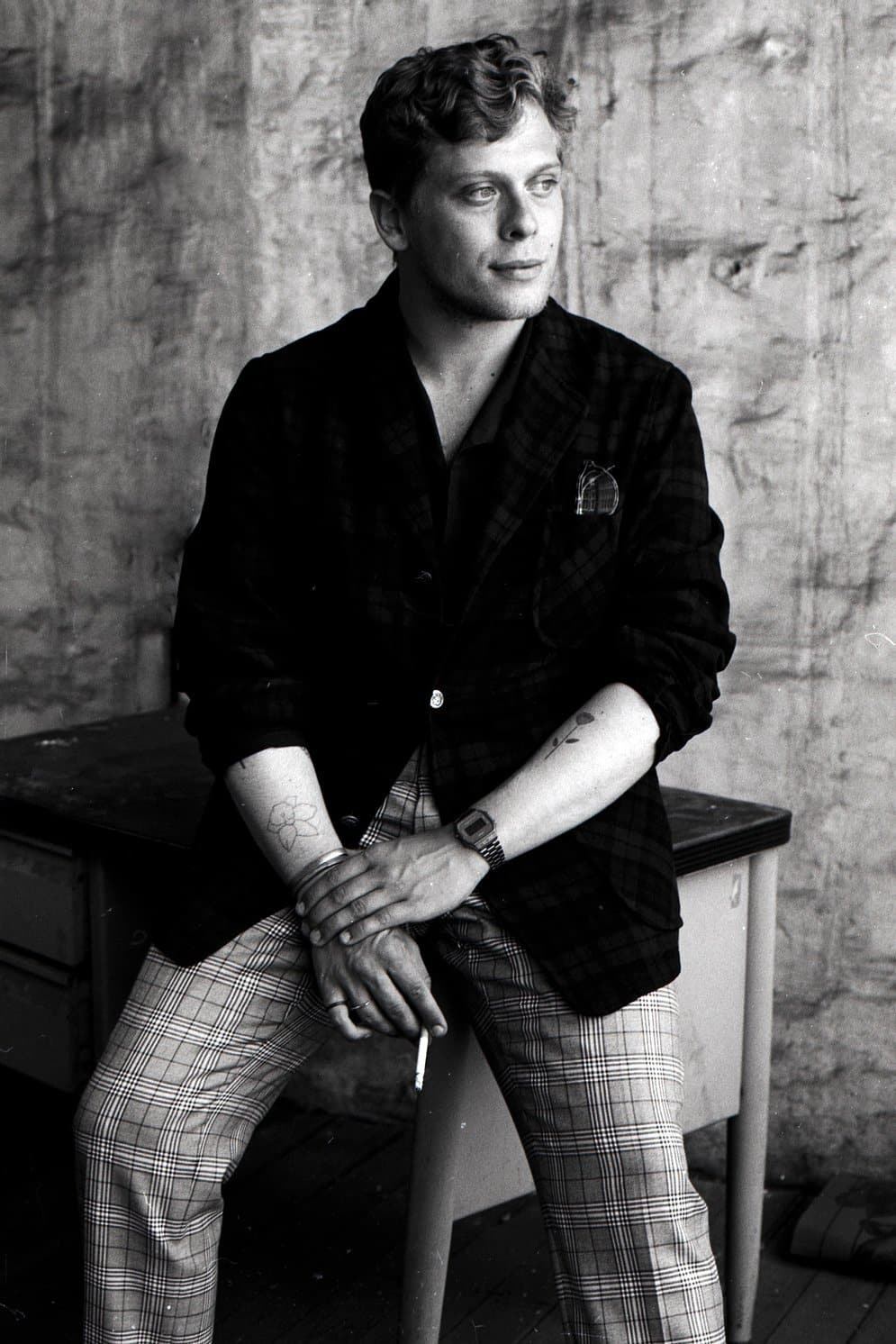 Thomas Renwart (Les Monseigneurs)
Thomas Renwart (Les Monseigneurs)© Nadja Zheks
His studio is a cosy space where rugs, drawings and tapestries are covered with flowers and butterflies, two central motifs in his imaginative universe. On the shelves, piles of books by poets and playwrights are precariously balanced. His favourite authors include Charles Baudelaire, Alicia Gallienne and Alan Bennett.
On the desk sits his computer, which allows him to encode the weaves of his tapestries, but also rolls of fabric for more traditional creation. A large window with a view of the monastery permits the artist – by slightly tilting his head – to measure the evolution of his precious botanical garden, a source that is essential for giving birth to his woven works.
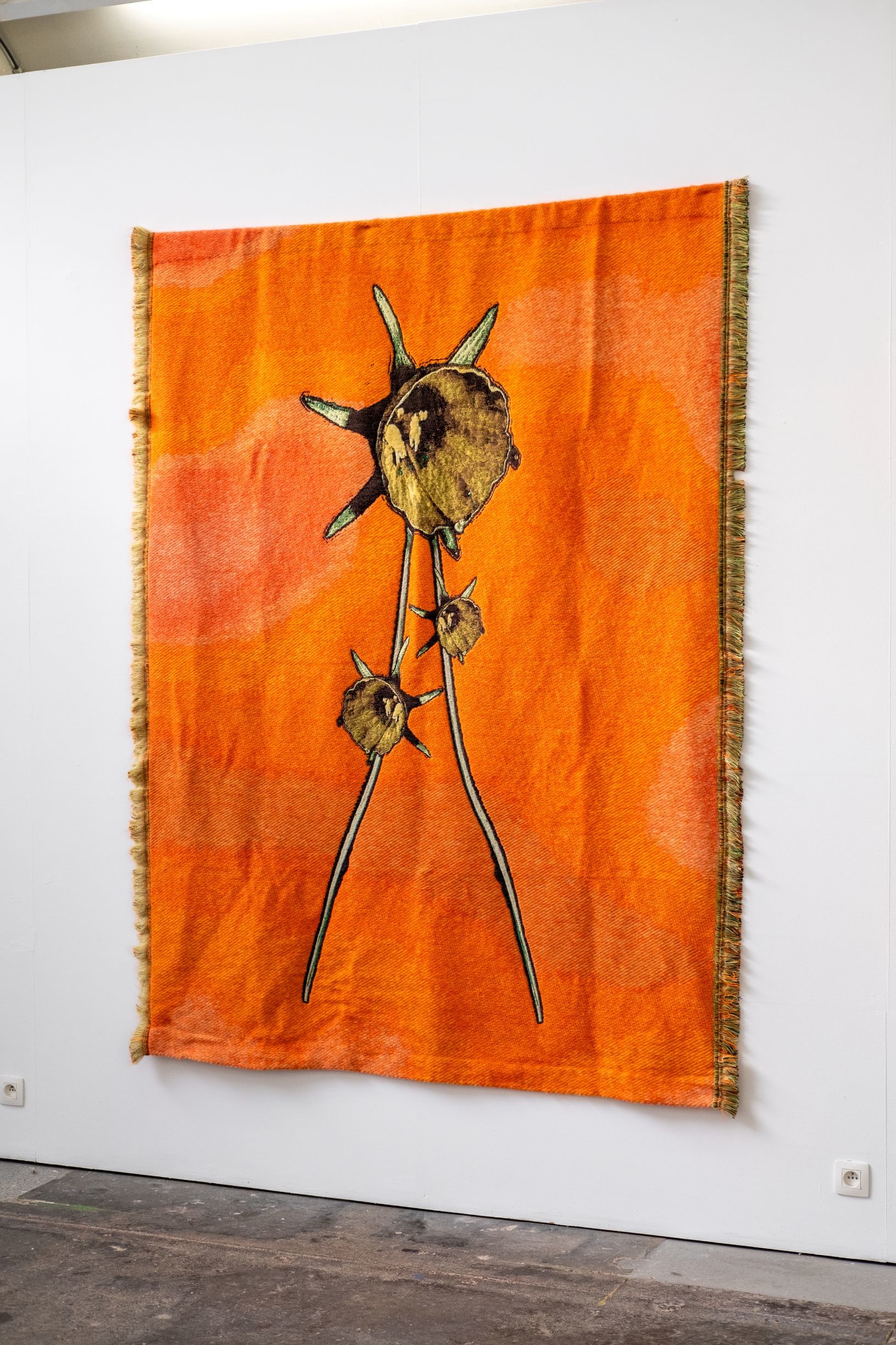 The Medusa Trumpet Lighthouse
The Medusa Trumpet Lighthouse© Thomas Renwart
A know-how that is both design and artistic
Since obtaining a specialised master in textile design at the Luca School of Arts in Ghent in 2019, Thomas Renwart has been creating monumental tapestries, embroideries and counterpanes under his artist’s name of Les Monseigneurs. When barely twenty-three, Thomas Renwart got a chance to work together with the Kortrijk-based company Verilin, renowned since the 1950s for its weaving of jacquard linen. The company regularly calls upon talented artists and designers, and the young graduate seized on the opportunity to produce large-scale tapestries there, using the impressive looms placed at his disposal.
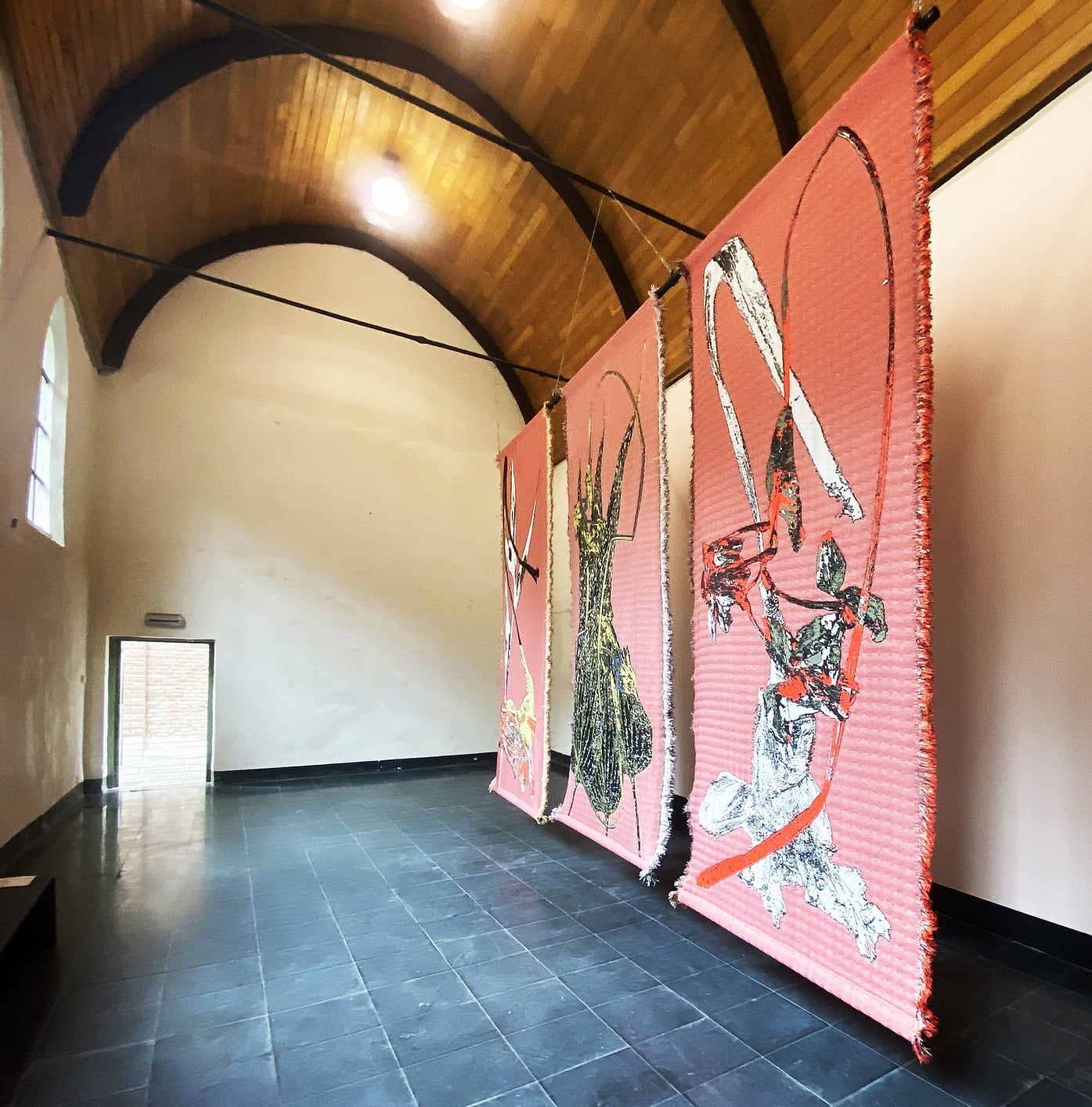 Guilding the Lily, a tryptic made with TextielLab Tilburg, exhibited at Kunsthal in Ghent
Guilding the Lily, a tryptic made with TextielLab Tilburg, exhibited at Kunsthal in Ghent© Michiel de Cleene
While the production may be industrial, it is by no means mass: each piece remains unique, like a work of art that has far more than just a utilitarian purpose. Parallel to this association, the young Ghent native continues to produce his smaller-sized “handmade” works, one of which we discover in the studio.
And then there is this point of honour: his commitment to work exclusively with suppliers and fabric specialists established in Belgium. ‘It is important to demonstrate this know-how, which is so integral to the Flemish tradition. They must be supported so that their activities and expertise survive.’
© Tim Wouters
The collaboration with Verilin has proven most fruitful, since in January 2021 they together won the Henry van de Velde Award, one of the most prestigious design distinctions in Belgium. The piece they created: curtains christened The moths. They simultaneously have a functional, design and artistic objective. When they are open, one sees an extremely abstract pattern with white-brown colours; when they are closed, one discovers a majestic lepidopteran with fully outspread wings. ‘This duality makes it possible to modify the atmosphere of the place as well as the perception of the material.’
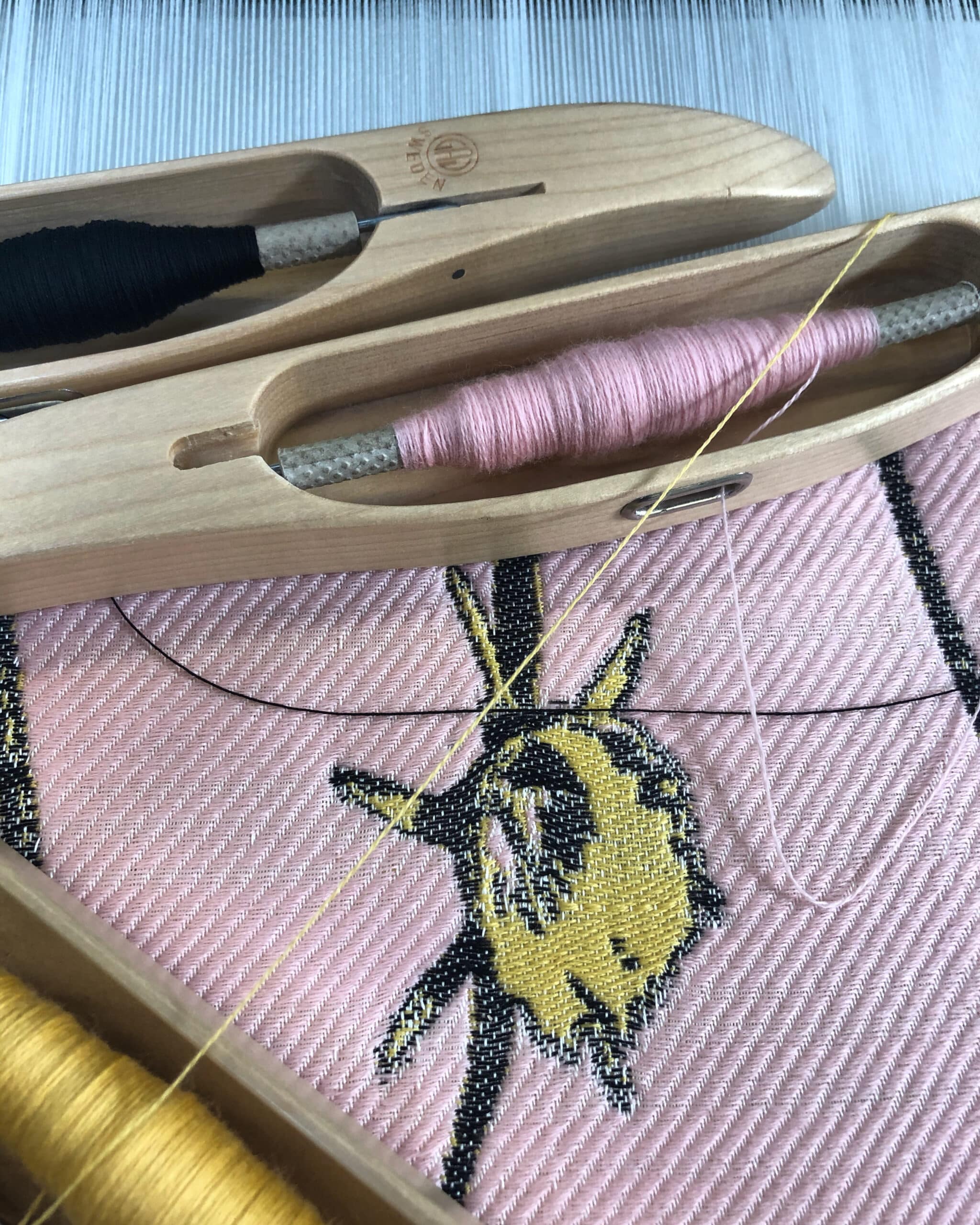 Weaving detail at TexLab in Liege, 2021
Weaving detail at TexLab in Liege, 2021© Thomas Renwart
For the artist, the reflection goes even further and emphasises the act of closing these heavy curtains. ‘Once everything goes dark outside, one finds oneself alone in the obscurity of the night. We can then light our interior and find ourselves in a protected place. Textile is truly at the origin, even if it is also design, a soothing domestic object that is linked to our home’, ‘a place of our own’, as Virginia Woolf might have said.
It is this sensitivity to the external and internal world, his poetic gaze and heightened taste for forms and colours that quite naturally elevate Thomas Renwart from the rank of a designer to that of an artist.
On the importance of flowers and butterflies
At the origin of his works: words and reflections fed by his wide-ranging, often elegiac, readings. Thoughts become phrases hastily jotted-down on the first thing within reach (a train ticket, a piece of fabric). They germinate for several months, like the plants and flowers that grow in his garden or a butterfly undergoing metamorphosis. They’re there ‘waiting’,
until ‘the flood of emotions’ reaches its culminating point and makes it possible to, finally, give the work material form.
That is how, little by little, a poetic, singular and botanical vocabulary develops. Flowers receive a place of honour: they seem gigantic, like this magnificent Petticoat Daffodil, which rises majestically against a uniform orange background, unembellished, like a lighthouse guiding those who have gone astray.
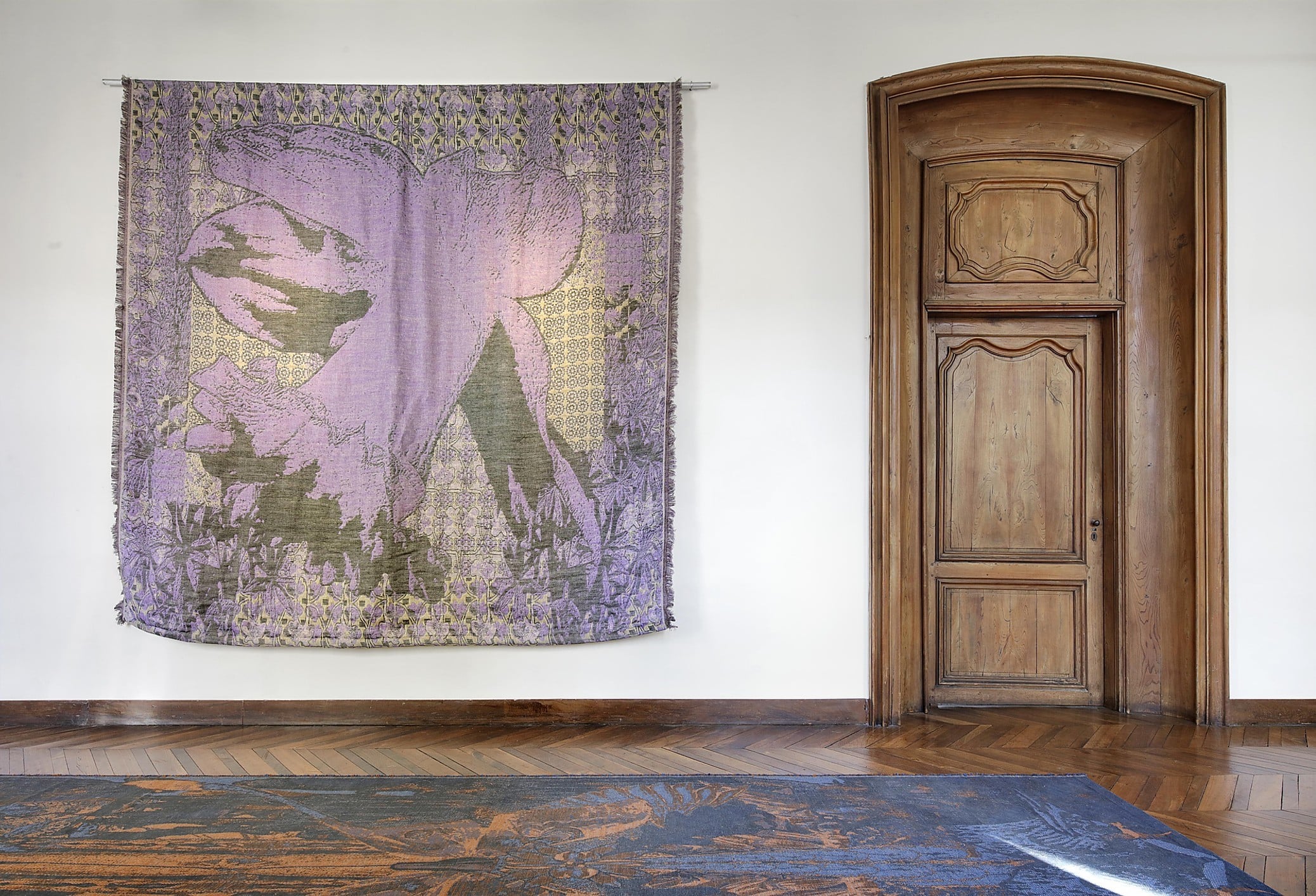 The Miraculous Garden, made with Verilin, 2020, on display at the Ghent Design Museum
The Miraculous Garden, made with Verilin, 2020, on display at the Ghent Design Museum© Filip Dujardin
The Miraculous Garden mischievously includes a little daffodil present in the Flemish 15th-century masterpiece, The Adoration of the Mystic Lamb, painted by the Van Eyck brothers.
Here, the artist takes pleasure in disproportionately magnifying the flower, on a lavender tone, blurring the borders between the recognisable and the unrecognisable, the visible and the invisible. Because there really is a stylistic duality at the heart of Thomas Renwart’s work. Figuration confronts abstraction, the delicacy of the old-fashioned colours of the large canvasses of the past affronts the more electric and contemporary tones, the romantic curves superimpose themselves at times on more rigorous geometrical compositions.
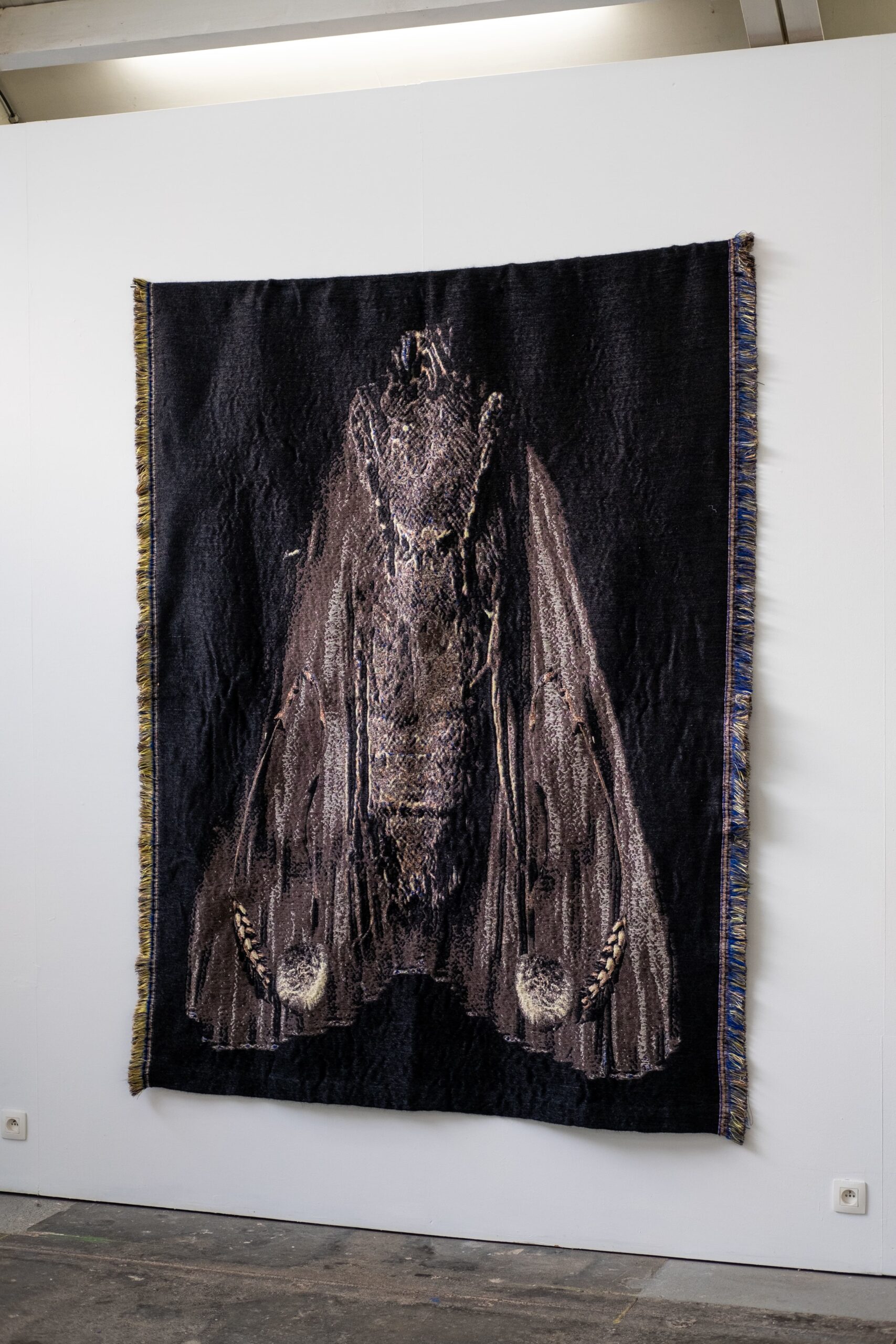 To boldness I pledge, made with TextielLab Tilburg, 2021
To boldness I pledge, made with TextielLab Tilburg, 2021© Daj Van Den Bussche
Most recently, the young artist has been pushing himself outside his ‘comfort zone’ and exploring darker, less dazzling colours in a much more graphic style, as illustrated by this imposing installation in situ, entitled Leaving in the night, currently on display at the Bruthausgallery in the Flemish City of Waregem. It is composed of seven huge tapestries arranged in a circle on the theme of ‘the factory production of butterflies’. From scene to scene, the visitor discovers the progressive birth of these four-winged insects which, from nothingness, come to life, vigorously unfolding their wings, irrefutable proof of their presence on earth.
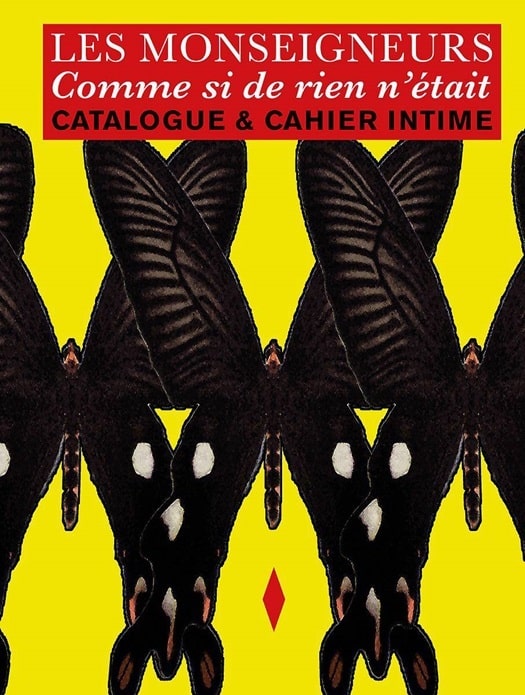 Cover of the book 'Comme si de rien n'était'
Cover of the book 'Comme si de rien n'était'Butterflies appear again on the sublime cover of a very recent publication. Under the double label of catalogue and intimate notebook, without text (apart from a preface), the pages reveal images like a patchwork, a feeling rather than an explanation of the intimist and captivating world of this atypical artist.
One is delighted to discover here certain of his works, close-ups of fabric, but above all his creative environment such as his workshop, his first-class garden and the family greenhouse, where he collected dead butterflies and put them in a safe place.
Thomas Renwart, alias Les Monseigneurs, brings tapestry into the present in an undeniably novel and exciting manner. A young talent to keep a close eye on.

